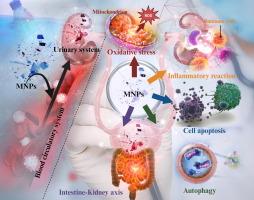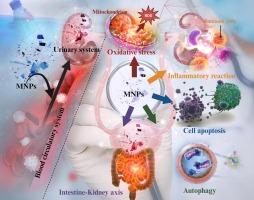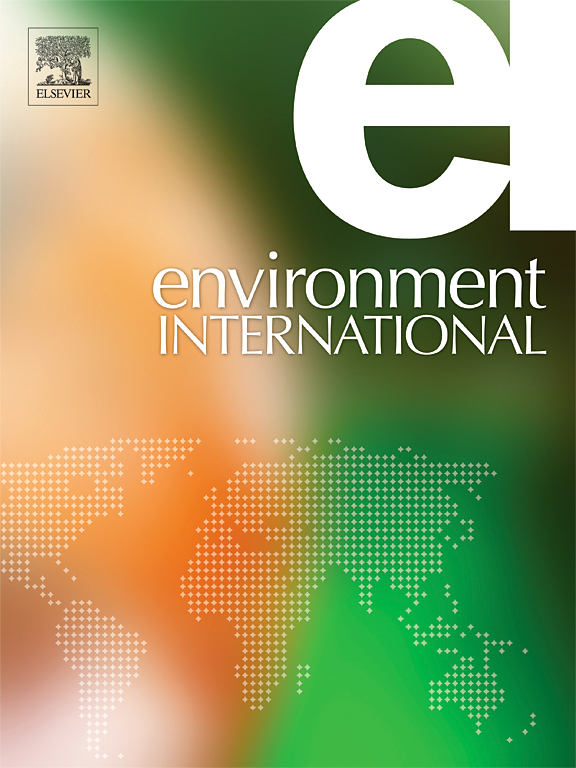Micro/nano plastics in the urinary system: Pathways, mechanisms, and health risks
IF 10.3
1区 环境科学与生态学
Q1 ENVIRONMENTAL SCIENCES
引用次数: 0
Abstract
Micro/Nano plastics (MNPs) pollutants are widespread in the environment, raising significant concerns about their biosafety. Emerging studies indicate that the urinary system is a primary accumulation site for MNPs, leading to severe tissue and functional damage. This review aims to summarize recent research on the potential hazards that MNPs may pose to the urinary system, highlighting the mechanisms of toxicity and the current state of knowledge. Studies have shown that MNPs enter the human body through drinking water, the food chain, inhalation, and skin contact. They may penetrate the bloodstream via the digestive, respiratory, and skin systems, subsequently dispersing to various organs, including the urinary system. The potential accumulation of MNPs in the urinary system might induce cellular oxidative stress, inflammation, apoptosis, autophagy, the “intestine-kidney axis”, and other possible toxic mechanisms. These processes could disrupt kidney metabolic functions and promote tissue fibrosis, thereby potentially increasing the risk of urinary system diseases. Despite ongoing research, the understanding of MNPs’ impact on the urinary system remains limited. Therefore, this review provides a comprehensive overview of MNPs’ potential toxicity mechanisms in the urinary system, highlights key challenges, and outlines future research directions. It offers a theoretical basis for the development of effective protective measures and policies.


泌尿系统中的微/纳米塑料:途径、机制和健康风险
微/纳米塑料(MNPs)污染物在环境中广泛存在,引起了人们对其生物安全性的极大关注。新近的研究表明,泌尿系统是 MNPs 的主要积聚场所,会导致严重的组织和功能损伤。本综述旨在总结有关 MNPs 可能对泌尿系统造成潜在危害的最新研究,重点介绍毒性机制和目前的知识水平。研究表明,MNP 通过饮用水、食物链、吸入和皮肤接触进入人体。它们可能会通过消化系统、呼吸系统和皮肤系统渗入血液,随后扩散到各个器官,包括泌尿系统。MNP 在泌尿系统中的潜在积累可能会诱发细胞氧化应激、炎症、细胞凋亡、自噬、"肠-肾轴 "和其他可能的毒性机制。这些过程可能会破坏肾脏代谢功能,促进组织纤维化,从而可能增加泌尿系统疾病的风险。尽管研究仍在继续,但人们对 MNPs 对泌尿系统影响的了解仍然有限。因此,本综述全面概述了 MNPs 在泌尿系统中的潜在毒性机制,强调了主要挑战,并概述了未来的研究方向。它为制定有效的保护措施和政策提供了理论依据。
本文章由计算机程序翻译,如有差异,请以英文原文为准。
求助全文
约1分钟内获得全文
求助全文
来源期刊

Environment International
环境科学-环境科学
CiteScore
21.90
自引率
3.40%
发文量
734
审稿时长
2.8 months
期刊介绍:
Environmental Health publishes manuscripts focusing on critical aspects of environmental and occupational medicine, including studies in toxicology and epidemiology, to illuminate the human health implications of exposure to environmental hazards. The journal adopts an open-access model and practices open peer review.
It caters to scientists and practitioners across all environmental science domains, directly or indirectly impacting human health and well-being. With a commitment to enhancing the prevention of environmentally-related health risks, Environmental Health serves as a public health journal for the community and scientists engaged in matters of public health significance concerning the environment.
 求助内容:
求助内容: 应助结果提醒方式:
应助结果提醒方式:


